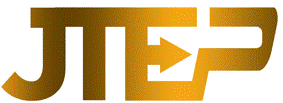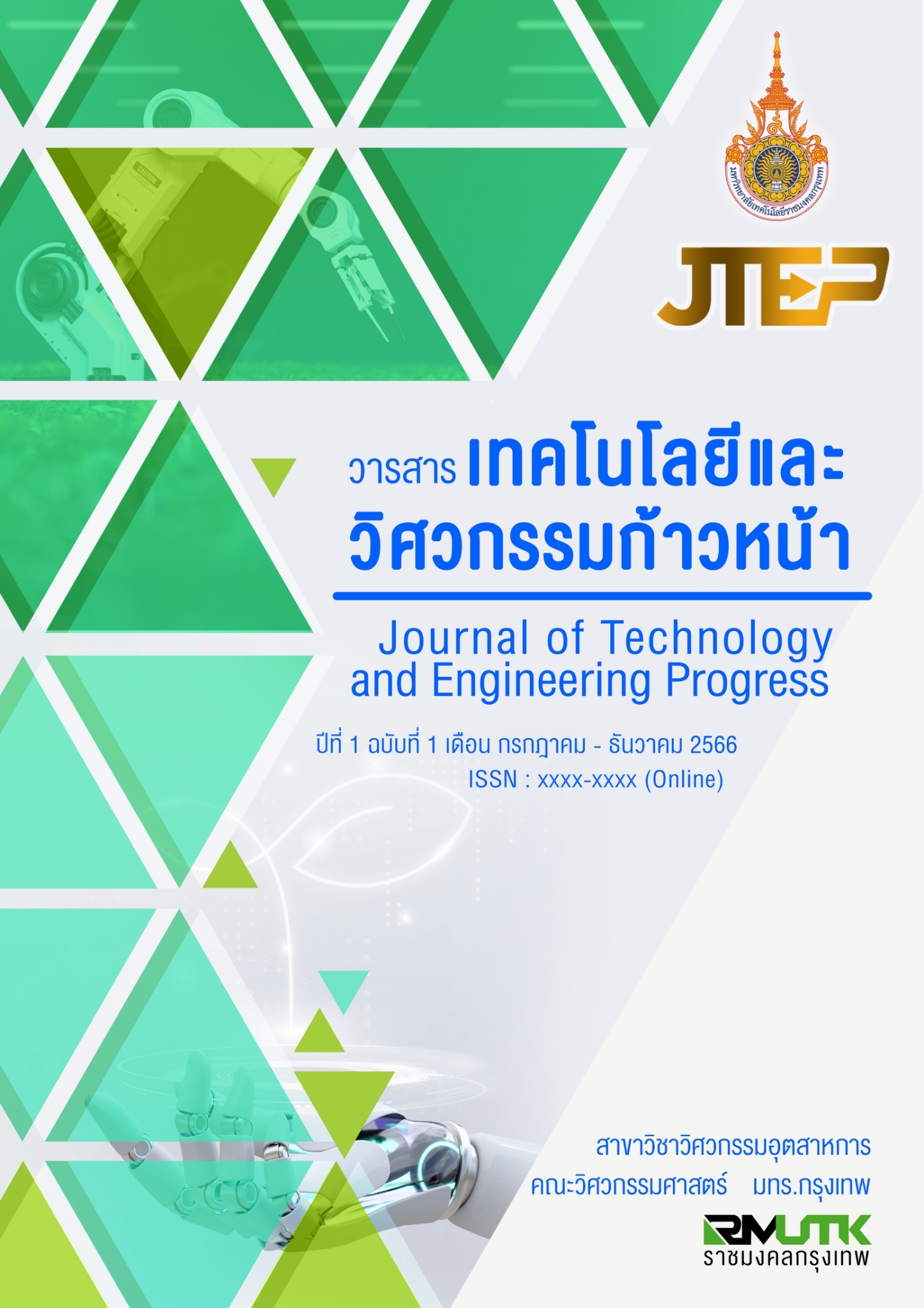การเปรียบเทียบผลกระทบของเงื่อนไขการดึงขึ้นรูปในกระบวนการดึงลวดอลูมิเนียมผสม เกรด AA5052
Main Article Content
บทคัดย่อ
งานวิจัยนี้มีวัตถุประสงค์เพื่อศึกษาและเปรียบเทียบผลกระทบของเงื่อนไขการดึงขึ้นรูปเส้นลวดอลูมิเนียมผสมเกรด 5052 ซึ่งประกอบไปด้วยขนาดมุมดาย ชนิดสารหล่อลื่น และความเร็วในการดึงขึ้นรูป ที่ส่งผลต่อแรงดึงลวดและคุณภาพเส้นลวดสำเร็จ โดยดายสำหรับการดึงขึ้นรูปทำจากวัสดุทังสเตนคาร์ไบด์เกรด K20 (ISO Code) มีขนาดมุมไหลเข้าต่างกัน 3 ระดับ คือ 16°, 18° และ 20° เส้นลวดก่อนการดึงขึ้นรูปมีขนาดเส้นผ่านศูนย์กลาง 2.0 มม. ทำการดึงขึ้นรูปด้วยอัตราการลดพื้นที่หน้าตัดเท่ากับร้อยละ 10 โดยใช้สารหล่อลื่นที่มีค่าความหนืดต่างกันจำนวน 3 ชนิด และถูกดึงด้วยความเร็ว 3 ระดับ ทำการทดสอบและวิเคราะห์ผลการทดลองจาก แรงดึงขึ้นรูป ค่าความหยาบผิว และความแข็งแรงดึงของเส้นลวดสำเร็จ ผลการทดลองพบว่าการดึงลวดผ่านดายที่มีขนาดมุมไหลเข้า 16° ด้วยความเร็ว 0.1 เมตร/วินาที โดยใช้สารหล่อลื่น DN Press Draw40 ใด้เส้นลวดสำเร็จที่มีพื้นผิวดีที่สุด โดยการดึงขึ้นรูปเส้นลวดผ่านดายที่มีขนาดมุมไหลเข้าขนาดใหญ่และใช้ความเร็วในการดึงขึ้นรูปต่ำ จะใช้แรงในการดึงขึ้นรูปและให้เส้นลวดสำเร็จที่มีความแข็งแรงมากกว่าจากผลของการเปลี่ยนรูปแบบรีดันแดนซ์ ส่วนการดึงขึ้นรูปผ่านดายที่มีขนาดมุมไหลเข้าขนาดเล็กและใช้ความเร็วในการดึงขึ้นรูปสูง จะใช้แรงในการดึงขึ้นรูปน้อยกว่าและเส้นลวดสำเร็จมีค่าความแข็งแรงดึงน้อยกว่า ส่วนผลกระทบของสารหล่อลื่นพบว่า การดึงลวดโดยใช้สารหล่อลื่นที่มีค่าความหนืดต่ำจะใช้แรงดึงในการขึ้นรูปสูงกว่า ได้เส้นลวดสำเร็จซึ่งมีค่าความหยาบผิวและค่าความแข็งแรงดึงที่ต่ำกว่า
Article Details

อนุญาตภายใต้เงื่อนไข Creative Commons Attribution-NonCommercial-NoDerivatives 4.0 International License.
Journal of Technology and Engineering Progress is licensed under a Creative Commons Attribution-NonCommercial-NoDerivatives 4.0 International (CC BY-NC-ND 4.0) licence, unless otherwise stated. Please read our Policies page for more information
เอกสารอ้างอิง
T. Viktor. “Steel Wire Production by Cold Drawing”, Hochschule Anhalt. Vol. 1, 2010, pp. 70-83.
G. FEDORKO, V. MOLNÁR, N. HUSÁKOVÁ, M. WEISZER. “Analysis of forces in steel wire rope of mining hoisting machine passing sheave”, In: 4th Balkan Mining Congress: 18th-20th October 2011, Ljubljana, 2011, pp. 235-238.
J. BOROŠKA , V. MOLNÁR, G. FEDORKO, “Vplyv priemeru drôtu ocelového lana na jeho skutočné napätie”, Doprava a logistika, Vol. 8, 2005, pp. 5-15.
G. Vega, A. Haddi, A. Imad, “Temperature effects on wire-drawing process: Experimental investigation”, International Journal of Material Forming, 2009, : DOI: 10.1007/s12289-009-0468-y
F.A.Hashim, S.M.Ihmood, K.A. Mohammed, “Microstructural Investigation of Wire Failure in Wire Drawing Process”, University of Thi-Qar Journal, Vol.14 (1), 2019, pp. 53-62.
U.S. Dixit, P.M. Dixit, “An analysis of the steady-state wire drawing of strain hardening materials”, Journal of Material Process Technology, Vol. 47, 1995, pp. 201–29.
M. Suliga, R. Kruzel, T. Garstka. (2015). “The influence of drawing speed on structure changes in high carbon steel wires”,J. Gazdowicz Metalurgija, Vol. 54, pp. 161–164.
S. M. Byon, S. J. Lee, D. W. Lee, Y. H. Lee, and Y. Lee, “Effect of coating material and lubricant on forming force and surface defects in wire drawing process,” Trans. Nonferrous Met. Soc. China English Ed., vol. 21(1), 2011, pp. s104–s110.
S.M. Dhaher, “Preparation of Dry Solid Lubricant for Drawing of Welding Steel Wires from Local Iraqi Materials,” Al - Mustansiriya J. Sci, vol. 20 (5), 2009, pp. 28–34.
M. T. Hillery and V. J. Mccabe, “precessh g Materials Wire drawing at elevated temperatures using different die materials and lubricants IAVOmeter Pyrometer,” J. Mater. Process. Technol, vol. 55, 1995, pp. 53–57.
S. M. Hafis, M. J. M. Ridzuan, A. Rahayu, Mohamed, R. N. Farahana, and S. Syahrullail, “Minimum quantity lubrication in cold work drawing process: Effects on forming load and surface roughness,” Procedia Eng., vol. 68, 2013, pp. 639–646.
E.K. Saied , N.I. Elzeiny, H.T. Elmetwally, A.A. Abd-Eltwab, “An Experimental Study of Lubricant Effect on Wire Drawing Process”, International Journal of Advanced Science and Technology, Vol. 29 (1), 2020, pp. 560–568.
E. Siebel, R. Kobitzsch, “Die Erwarmung des Ziehgutes beim Drahtziehen”. Stahl U. Eisen(63), 1943, pp. 110-113.
G. Vega , A. Haddi, A. Imad, “Temperature effects on wire-drawing process: experimental investigation”, Int. J. Mater. Vol.2, 2009, pp. 229–232.
M. Suliga, R. Kruzel, T. Garstka, “The influence of drawing speed on structure changes in high carbon steel wires”, J. Gazdowicz, Metalurgija, Vol.54, 2015, pp. 161–164.
A.F. Gutsol, “Improving ASTM D445, the Manual Viscosity Test, by Video Recording”, Journal of Testing and Evaluation, Vol. 47 (1), 2019, pp. 310-323.
J.Larsson, A. Jansson, P.Karlsson, “Monitoring and evaluation of the wire drawing process using thermal imaging” The International Journal of Advanced Manufacturing Technology, Vol.101, 2019, pp. 2121–2134.
Z. Muskalski, S. Wiewiórowska, “The Theoretical Analysis of Wire Drawing Process for Hydrodynamic Friction Conditions” Metallurgical and Mining Industry, Vol. 3 (7), 2011, pp. 74-78.
E.K. Saied, N.I. Elzeiny, H.T. Elmetwally, A.A. Abd-Eltwab, “An Experimental Study of Lubricant Effect on Wire Drawing Process”, International Journal of Advanced Science and Technology, Vol. 29 (1), 2020, pp. 560 – 568.
M. Suliga, “The influence of drawing speed on surface topography of high carbon steel wires”, Metalurgija, Vol. 56, 2017, pp. 182–184.
M.M. Mahdavi, H. Haghighat, “On the Optimum Die Angle in Rod Drawing Process Considering Strain-hardening Effect of Materia” Iranian Journal of Mechanical Engineering, Vol. 20(1), 2019, pp.113-128.


